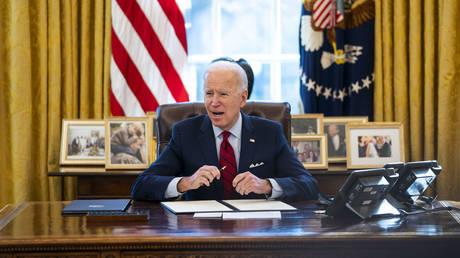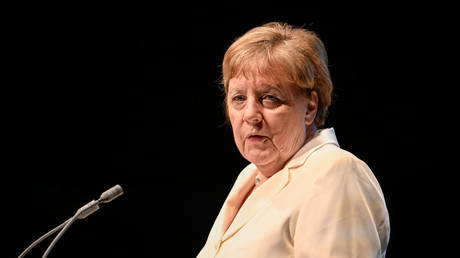ARTICLE AD BOX
BALTIC states are racing to bolster defences on their borders with Russia and Belarus as Europe braces for all-out war.
Admiral Rob Bauer, chief of NATO’s military committee, has called on the West to “prepare for an era of war” – adding that the alliance “needs a warfighting transformation”
 AFP
AFP Getty
Getty Reuters
Reuters
Estonia, Latvia and Lithuania have agreed to build a series of bunkers on their borders with Russia and Belarus to protect their forces in the event of an attack, Estonia’s Defence Ministry announced on Friday.
The three NATO and EU members signed an agreement on the construction of “anti-mobility defensive installations”.
Baltic states are seen as most at risk from a potential Russian attack as they share their border with Russia and its ally Belarus.
Estonia’s Defense Ministry said in a statement: “The Baltic countries are one area of operations, and therefore [our] defence installations will be built in coordination with Latvia and Lithuania.”
Hanno Pevkur, Estonian Defence Minister, said Russia’s invasion of Ukraine has demonstrated the “need for physical defensive installations on the border” as a firing war could soon be launched by Russia against Europe.
Putin has made dozens of threats to the West since his invasion of Ukraine nearly two years ago.
And recently, a leaked military report revealed what could be the Kremlin top’s step-by-step plan to bring the West to the brink of World War 3 – and it starts in weeks.
The secret docs detail the despot’s possible “path to conflict” which reaches its climax in the summer of 2025 on “Day X” when half a million Nato and Russian soldiers will face each other.
To counter the potential threat from Moscow, Estonia is planning to build 600 concrete bunkers with distribution lines – costing more than £55million – on its side of the border with Russia.
Each bunker will be designed to accommodate 10 military troops for extended periods – and will also have life-support equipment.
According to the sketches provided by the Estonian ministry, the wide range of bunkers will consist of T-shaped trenches, camouflaged by foliage.
These trenches are designed to withstand 152mm projectiles as well as direct enemy fire.
In addition to the labyrinth of bunkers, “dragon’s teeth” tank barriers, barriers, minefields and barbed wire would also be stockpiled for installation if need be.
It comes as chances of World War Three continue to rise after the growing concerns about the escalations of regional wars.
It is feared that Putin’s invasion of Ukraine could see Russian troops going beyond Ukrainian borders to launch attacks on Europe, forcing NATO to join the war.
Russia’s warmongering foreign minister Sergei Lavrov vowed a “New World Order” was emerging and promised the West that their time of “global domination” was over.
In a major press conference, the Kremlin crony blamed the US and its allies for launching a “war” against Russia and claimed Moscow and its pariah pals have now “surpassed” NATO on the world stage.
Just a few days ago, Germany’s Defence Minister made a bombshell claim, saying Putin could launch an attack on NATO “in less than a decade”.
He added: “We hear threats from the Kremlin almost every day… so we have to take into account that Vladimir Putin might even attack a Nato country one day.”
Sweden – who could soon join the North Atlantic alliance – also issued a chilling warning, urging its citizens to “brace for a war”.
The Swedish commander-in-chief Micael Bydén said: “Russia’s war against Ukraine is just a step, not an end game.”
NATO has now announced its biggest call-up since the Cold War as 90,000 troops prepare to begin World War Three drills in a matter of days.
Dubbed Steadfast Defender, the military drill will begin next week and run to late May – and will involve units from all 31 NATO member countries plus candidate-member Sweden.
Top commander Chris Cavoli said: “The Alliance will demonstrate its ability to reinforce the Euro-Atlantic area by a transatlantic movement of forces from North America.”
Troops will be mobilised throughout Europe until the end of May in what is being called “a simulated emerging conflict scenario with a near-peer adversary” – essentially Russia.
Baltic states – which are seen as most at risk from a potential Russian attack – will remain one of the most important locations for the drill.
On Monday, Defence Secretary Grant Shapps announced the deployment of all three Armed Forces to the 31-nation drill on Monday.
Some 16,000 British troops will be sent with tanks, artillery and helicopters to deploy in eastern Europe from next month.
Troops from the UK will be sent alongside the Royal Navy’s two new aircraft carriers and eight warships.
The RAF’s F-35 lightning attack aircraft will also be present and tested with imitated conflict scenarios.
 Getty
Getty NATO/IMS/Polaris
NATO/IMS/Polaris Getty Images - Getty
Getty Images - Getty.png)
 10 months ago
7
10 months ago
7








 English (US)
English (US)